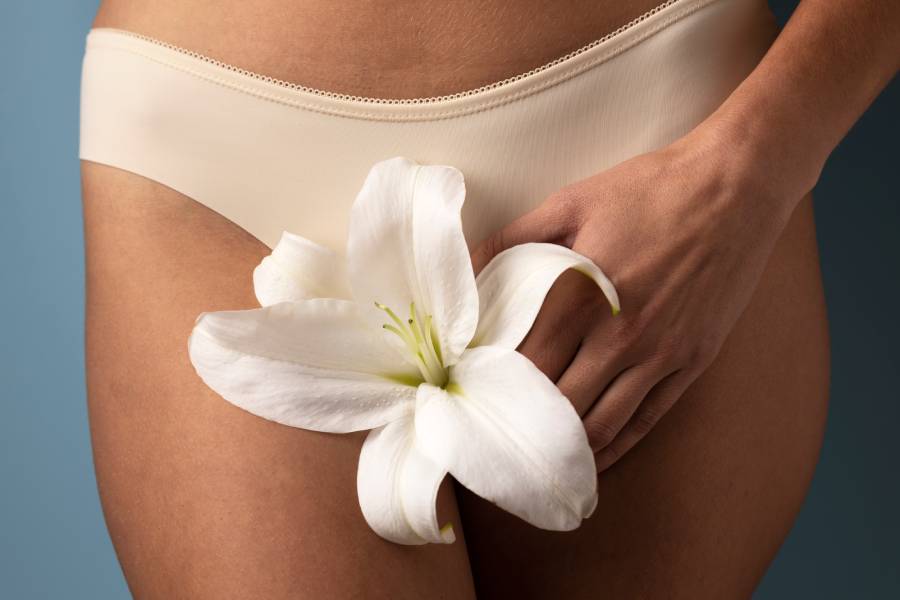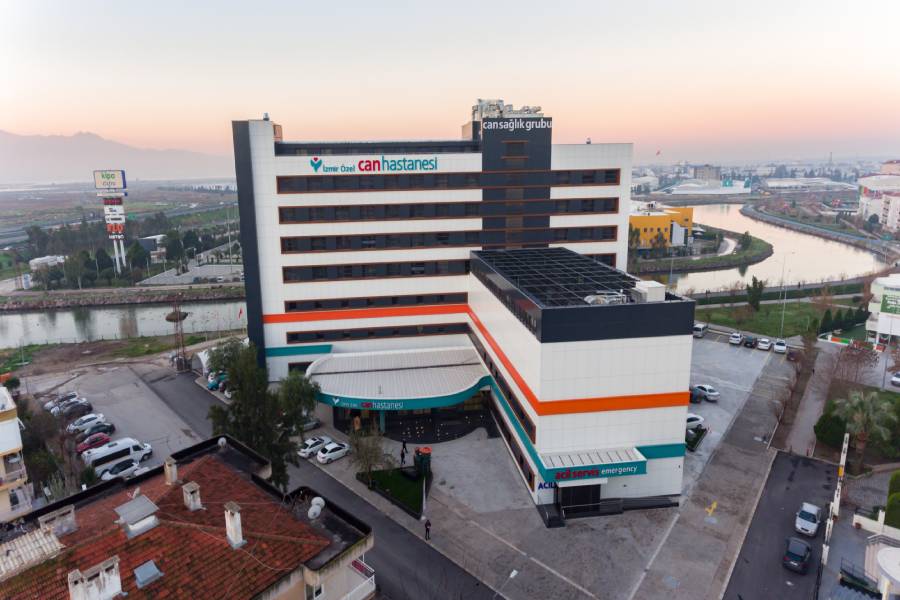Healthy Recovery Process After Genital Aesthetic Surgery
Categorised in: HEALTH GUIDE
Published Date:

| Day | Things To Do | Things to Avoid |
| 1-7 Days | – Bed rest – Using medications recommended by the doctor – Paying attention to hygiene of the genital area | – Weight lifting – Intense physical activities – Wearing clothing that may irritate the area |
| 8-14 Days | – Starting light walks – Paying attention to nutrition and water consumption – Going to regular doctor check-ups | – Going to the gym – Sexual intercourse – Activities that may pose a risk of infection |
| 15-30 Days | – Return to most normal daily activities – Get a doctor’s approval for sports – Use recommended creams and products to support healing | – Heavy sports – Activities such as swimming and sauna – Direct pressure on the area |
The decision to undergo genital aesthetic surgery is a profound one, necessitating a thorough comprehension of the post-operative recovery process for optimal outcomes. This discourse aims to elucidate the critical phases of genital aesthetic aftercare, facilitating a secure and efficacious healing trajectory. The importance of adhering to post-surgical care protocols cannot be overstated, as it dramatically diminishes the likelihood of complications and fosters superior recovery.
Individuals undergoing sexual health surgery must possess a clear understanding of the recovery phase’s expectations. A meticulously planned recovery regimen is instrumental in mitigating discomfort and bolstering the body’s innate healing capabilities. By diligently following medical directives and prioritising self-care, one can expedite the recovery process and preserve the surgery’s enduring advantages.
Understanding Genital Aesthetic Surgery
Genital aesthetic surgery encompasses a spectrum of cosmetic genital procedures, aimed at refining or modifying the appearance and functionality of the genital region. This category includes labiaplasty, phalloplasty, vaginoplasty, and penile enhancement, each serving distinct purposes. Labiaplasty, a procedure that involves the reshaping or reduction of the labia minora or majora, is predominantly sought by women. It addresses both functional and aesthetic concerns, such as alleviating discomfort and improving the genital area’s appearance. In contrast, phalloplasty is a more complex operation, focused on constructing or reconstructing the penis. It is commonly undertaken by trans men as part of their gender-affirming surgery journey.
Vaginoplasty, another procedure, is dedicated to the reconstruction or creation of a vagina. It is frequently chosen by trans women or individuals seeking reconstructive solutions post-trauma. Penile enhancement, which encompasses a variety of techniques, aims to augment penile length or girth. This is often pursued to enhance self-esteem and sexual satisfaction.
Individuals opt for these cosmetic genital procedures for a multitude of reasons, both aesthetic and functional. The motivations behind such surgeries are deeply personal, ranging from boosting self-image and confidence to resolving physical discomfort and improving sexual satisfaction. It is imperative to debunk common myths and provide accurate information to those contemplating these procedures. This ensures they are well-informed and supported by healthcare professionals with expertise in sexual health and genital aesthetics.
Preparing for Genital Aesthetic Surgery
The process of preparing for genital aesthetic surgery necessitates strict adherence to pre-operative guidelines, meticulously outlined by your surgeon. The commencement involves undergoing a series of health evaluations, encompassing blood tests and physical examinations, to ascertain your suitability for the procedure. During your surgical consultation, a detailed discussion of your objectives and anticipations will occur, facilitating the creation of a bespoke surgical plan, tailored to your specific requirements and medical background. Equally critical is the mental health aspect during this preparatory stage. It is imperative to be mentally fortified and harbour realistic expectations regarding the surgery’s outcomes. Engaging in pre-operative counselling or consulting with a mental health professional can be instrumental in mitigating any apprehensions or doubts.
The role of nutrition in facilitating your body’s healing process cannot be overstated. Adhering to a diet rich in vitamins and minerals in the weeks preceding the surgery can enhance your immune system and expedite recovery. Your surgeon may also furnish specific medication guidelines, detailing which medications to abstain from in the days leading up to the surgery.
Efficient organisation of your post-surgery period is vital for a seamless recovery. This entails setting up a conducive recovery environment at home and ensuring the presence of a caregiver during the initial days post-procedure. By diligently following these pre-operative guidelines and collaborating with your surgeon to develop a customised surgical plan, you will be adequately prepared for a successful genital aesthetic surgery and a swift recovery.
Immediate Post-Operative Care
Adherence to post-surgery guidelines is imperative immediately following genital aesthetic surgery for a seamless recovery. Patients are typically observed in a recovery area to evaluate their anaesthetic recovery, ensuring prompt management of any immediate adverse effects. Upon discharge, it is imperative to meticulously follow the genital surgery aftercare instructions issued by the surgical team.
Pain management is generally achieved through prescribed medications, with patients advised to adhere strictly to the dosage instructions to minimise discomfort. Mobility restrictions are commonly recommended to prevent undue stress on the surgical site; this includes limiting physical activities and ensuring adequate rest.
Monitoring for complications is a critical component of this initial phase. Patients must be vigilant for any signs of infection, such as excessive swelling, redness, or discharge, and report these to their surgeon without delay. Adherence to post-surgery guidelines provided by your healthcare provider can significantly impact the success of your recovery.
Follow-up appointments are necessary to track the healing process and address any concerns that may arise. These appointments enable the surgical team to evaluate the progress of anaesthetic recovery and the overall effectiveness of the genital surgery aftercare regimen.
Managing Pain and Discomfort
The necessity of effective pain relief strategies post-genital aesthetic surgery cannot be overstated. A blend of prescribed analgesics and natural remedies is vital for a comfortable recuperation. Healthcare professionals frequently advocate for the use of over-the-counter medications, such as paracetamol or ibuprofen, for mild pain relief. Adherence to the dosage guidelines provided by your healthcare provider is imperative for optimal pain management.
For more severe pain, stronger analgesics like opioids or muscle relaxants may be prescribed. It is critical to follow the prescribed regimen and seek medical consultation if pain persists beyond the anticipated recovery timeframe. Familiarity with the expected levels of discomfort can aid in mental preparation for the recovery phase. Most patients experience a reduction in pain levels within the initial week, facilitating more effective discomfort management.
Integrating natural pain relief techniques, such as the application of cold packs and gentle physical activities, can enhance healing and diminish discomfort. Adequate hydration and a diet rich in anti-inflammatory foods also support the body’s natural recuperative processes. Maintaining regular communication with your healthcare provider is essential to address any unforeseen pain or discomfort promptly.
Hygiene and Wound Care
Proper hygiene is critical post-genital aesthetic surgery. Ensuring meticulous surgical site care is essential to prevent complications and foster a healthy healing process. Initiate by cleansing the area with a mild, fragrance-free soap to avert irritation. Subsequently, gently rinse and abstain from scrubbing the wound to preserve the integrity of the healing tissue.
Post-cleansing, it is imperative to pat the area dry with a soft, clean towel. This action aids in infection prevention and supports the body’s innate healing processes. The avoidance of direct alcohol application is critical, as it may induce dryness and discomfort.
Employing sterile dressings can further safeguard the wound. Regularly changing dressings is necessary to maintain the area’s cleanliness and diminish bacterial proliferation risks. Vigilance for signs of infection, such as redness, swelling, or unusual discharge, is vital. Immediate consultation with a healthcare professional is warranted if any of these symptoms manifest.
Compliance with these hygienic protocols is not only beneficial for surgical site care but also for a seamless and healthy healing process. Such diligence in preventive measures significantly minimises infection risks and optimises recovery outcomes.
What to Expect in the Weeks Following Surgery
In the initial stages of the long-term recovery process, various healing stages are commonly encountered. Immediately post-procedure, swelling and bruising are anticipated, gradually subsiding over the initial couple of weeks. Sensory alterations within the surgical zone are also prevalent, embodying a fundamental aspect of the healing trajectory.
By the third to fourth week, a notable enhancement is observable, with inflammation’s diminution. Adherence to the surgeon’s directives and regular attendance at follow-up care appointments are imperative. These actions facilitate the monitoring of progress and the timely resolution of any emerging concerns.
Adopting specific lifestyle modifications during this phase can substantially enhance recovery. The avoidance of strenuous physical exertion, the maintenance of optimal hygiene, and adherence to wound care protocols are critical. These measures not only facilitate the healing process but also contribute to a more streamlined recovery trajectory.
It is vital to acknowledge that each individual’s healing pace is unique, necessitating patience. By comprehending the expected progression and adhering to medical guidance, one can navigate the path towards complete recovery with confidence.
Maintaining Long-Term Results
The preservation of aesthetic outcomes post-genital surgery necessitates a diligent adherence to health maintenance protocols. A regimen that harmonises physical activity, nutritional intake, and sexual health vigilance is instrumental in perpetuating aesthetic enhancements. Such a holistic approach ensures the longevity of surgical benefits.
Physical fitness is indispensable for sustaining overall health, which, in turn, fortifies the efficacy of surgical interventions. Engaging in regular exercise not only aids in weight management but also enhances blood circulation. This is critical for the healing process and the maintenance of tissue integrity. A diversified fitness regimen also mitigates the risk of complications that could jeopardise the surgical site.
Nutritional intake stands as a fundamental pillar in the quest for sustainable surgical outcomes. A diet replete with vitamins, minerals, and antioxidants catalyses the body’s recuperative processes and fosters enduring health. The inclusion of nutrient-dense foods such as leafy greens, lean proteins, and whole grains is imperative. These provide the necessary building blocks for tissue repair and regeneration, ensuring the aesthetic benefits of your surgical intervention endure.
Psychological well-being is equally significant in the context of aesthetic satisfaction. The subjective experience of surgical outcomes is profoundly influenced by one’s mental state. Engaging in mindfulness practices, participating in activities that bring joy, and seeking support when necessary can significantly elevate your satisfaction with the surgical results. Addressing emotional concerns promptly is essential for a fulfilling recovery experience.
It is also noteworthy that follow-up interventions may be necessary to sustain or augment the initial aesthetic enhancements. Regular consultations with your healthcare provider are vital for the early identification and management of any complications. This proactive approach ensures the continued enjoyment of the benefits derived from your surgical intervention.
Related Posts

Why British Citizens Choose Turkey for Health Services?
British citizens are increasingly opting for Turkey when seeking medical treatments due to a combination of superior healthcare services, affordability, […]

Psychological Effects of Genital Aesthetics on Body Image
In a society increasingly focused on physical perfection, the realm of genital aesthetics has surfaced as an area of both […]

Common Concerns About Genital Plastic Surgery
Genital plastic surgery, a burgeoning field within the realm of cosmetic enhancements, has witnessed a notable surge in popularity. Procedures […]

In which cases is labiaplasty necessary?
Labiaplasty, a procedure that has recently garnered significant attention, involves the surgical reduction of the labia minora. This operation, also […]

When can i eat ice cream after gastric sleeve?
The allure of sweet treats post-gastric sleeve surgery is a common query. It is imperative to exercise patience as your […]